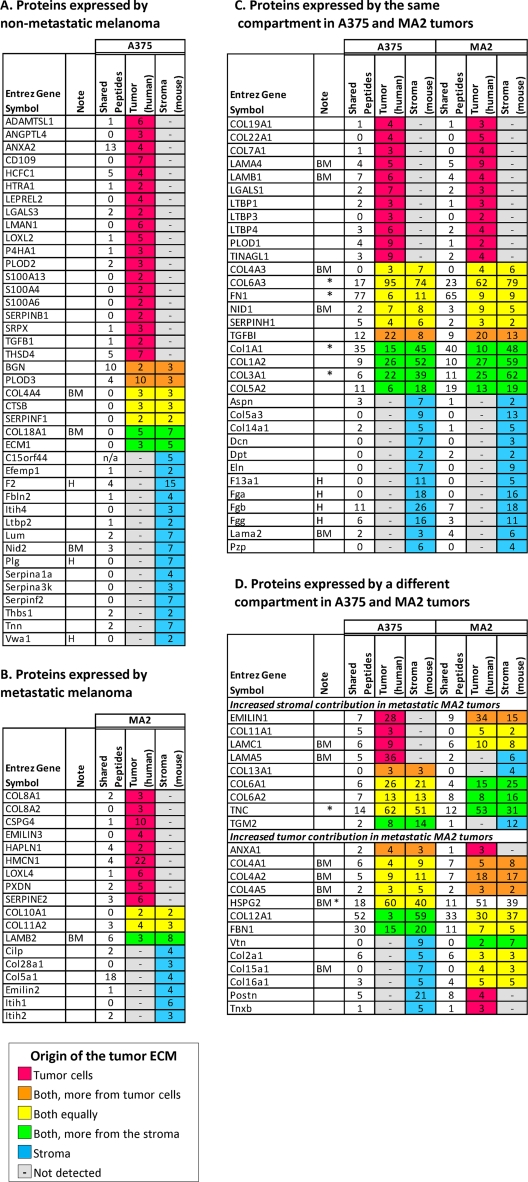Fig. 5.
The tumor extracellular matrix is secreted by both tumor cells and stromal cells and differs with metastatic potential. A, Proteins secreted by A375 tumors and not by MA2 tumors. B, Proteins secreted by MA2 tumors and not by A375 tumors. C, Proteins expressed by both tumor types and by the same compartment in the two tumor types. D, Proteins expressed by both tumor types but by different compartments. Proteins are sorted by tumor type and by their origins: tumor (red), stroma (blue), or both (yellow: similar abundance of the human and mouse proteins, orange: human form is at least 5 times more abundant than the mouse form, green: the mouse form is at least 5 times more abundant than the human form in the two samples, ratios were calculated using the values indicated in column Y and values are given in column Z of supplemental Table S6B and 6D) and by category. UniProt accession numbers are given in supplemental Table S6 (columns D and E). The number of shared peptides (common to human and mouse sequences) and of human- and mouse-specific peptides is given for each protein (data were extracted from columns V and W of supplemental Table S6B and 6D). BM indicates basement membrane proteins, H indicates proteins involved in hemostasis (i.e. plasma-derived - as expected, all of these are murine). Asterisks (*) indicate that, in addition to the identification of human- and mouse-specific peptides, the entries had a few peptides observed corresponding to distinct isoforms involving point mutations or exon deletions. For simplicity the isoforms are combined here. For detailed information, see Extended Experimental Procedure and supplemental Table S6.

